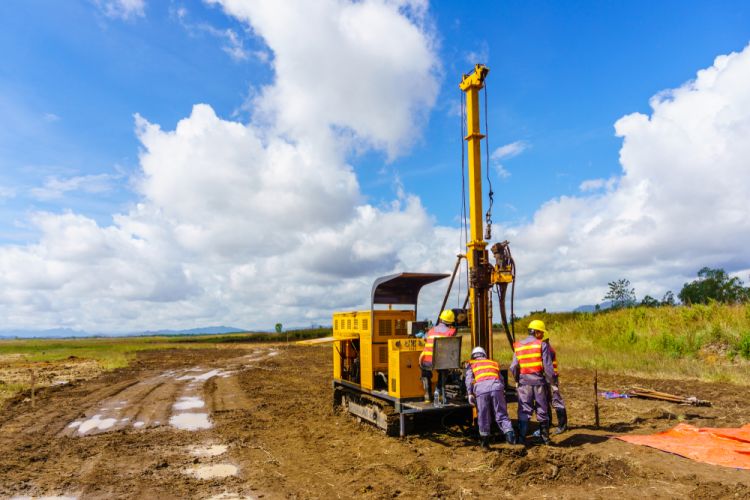Get This Report about Geotechnical Engineering For Construction Projects
Get This Report on Geotechnical Engineering For Construction Projects
Table of ContentsWhat Does Geotechnical Engineering For Construction Projects Do?The Buzz on Geotechnical Engineering For Construction ProjectsNot known Details About Geotechnical Engineering For Construction Projects Some Known Details About Geotechnical Engineering For Construction Projects What Does Geotechnical Engineering For Construction Projects Do?Geotechnical Engineering For Construction Projects for Beginners
The function of geotechnical engineering substantially deals with realizing the features of dirt and rock, which might vary dramatically by their thickness, wetness content etc. These features need to be taken a look at by geotechnical designers to anticipate their activities under different situations. The safety along with security of frameworks are impacted by dirt problems, making this evaluation essential.A geotechnical engineer will check out dirt to identify the bearing capability of the earth and recommend correct structure kinds, such as superficial structures, deep foundations like heaps, or specialized remedies like floating foundations for soft soils. Understanding the functions and actions of soil and rock, along with exactly how they interact with building and constructions that have been set up on or within them, is among the main explanations for why geotechnical design is necessary.
Along with architectural preparation and construction, geotechnical design is also important to the restoration and upkeep of pre-existing frameworks. Age-related destruction or extra issues could influence a structure's security and efficiency. Environmental management is accomplished through geotechnical design. Competence in air, water, and soil top quality maintenance is used by geotechnical designers to lessen the negative effects of jobs.
Framework development, offshore design, tunnel building, and deep foundations. Risk-based style and multidisciplinary teams. These elements will maintain the area evolving and ensure its continued importance in the years to find. To summarize, geotechnical engineering is an important self-control that protects the strength and stability of civil infrastructure. Geotechnical designers contribute to making building tasks effective around the world by comprehending the behaviour of planet products and applying proper planning approaches.
What Does Geotechnical Engineering For Construction Projects Mean?
The fundamental security of any type of project is crucial. Geotechnical engineering plays a vital function in making sure that frameworks are constructed on solid ground, essentially and figuratively. By analyzing dirt, rock, and subsurface conditions, geotechnical designers give necessary understandings that help in the design, building, and upkeep of buildings and framework.

Not known Factual Statements About Geotechnical Engineering For Construction Projects
Laboratory screening: Determining the residential properties of soil and rock. A number of high-profile building projects have actually successfully made use of geotechnical engineering to guarantee their stability and safety.

As a leader in geotechnical engineering, BECC Inc. is devoted to providing ingenious and reliable services that satisfy the highest possible requirements of top quality and safety., a mechanical designer and rock hound.
The Ultimate Guide To Geotechnical Engineering For Construction Projects
Terzaghi also developed the framework for concepts of birthing capacity of structures, and the concept for forecast of the price of negotiation of clay layers as a result of debt consolidation. Later on, Maurice Biot fully developed the three-dimensional dirt debt consolidation theory, expanding the one-dimensional design formerly established by Terzaghi to much more basic theories and introducing the set of basic equations of Poroelasticity.
Geotechnical engineers check out and establish the residential or commercial properties of subsurface problems and products.
Our Geotechnical Engineering For Construction Projects Diaries
Geologic mapping and analysis of geomorphology are generally completed in consultation with a rock hound or design rock hound. Subsurface exploration typically involves in-situ screening (as an example, the basic penetration test and cone penetration examination). The excavating of test pits and trenching (specifically for finding mistakes and slide airplanes) might additionally be utilized to learn more about soil conditions at depth. , which uses a thick-walled split spoon sampler, is the most usual way to collect disrupted examples.

Generally, the interface's exact geometry is unknown, and a streamlined user interface geometry is thought. Finite slopes call for three-dimensional versions to be examined, so most inclines are analyzed presuming that they are considerably large and can be represented by two-dimensional versions.
The smart Trick of Geotechnical Engineering For Construction Projects That Nobody is Discussing
The empirical technique may be defined as follows: General exploration sufficient to develop the harsh nature, pattern, and properties of down payments. Analysis of the most possible conditions and one of the most unfavorable imaginable discrepancies. Creating the design based upon a working hypothesis of behavior expected under the most probable problems. Option of quantities to be observed as construction earnings and computing their prepared for values based on the functioning theory under view the most unfavorable conditions.
Measurement of amounts and examination of actual problems. Style modification per actual conditions The empirical technique is ideal for construction that has already begun when an unanticipated growth takes place or when a failure or mishap looms or has already taken place. It is unsuitable for jobs whose style can not be modified during construction.